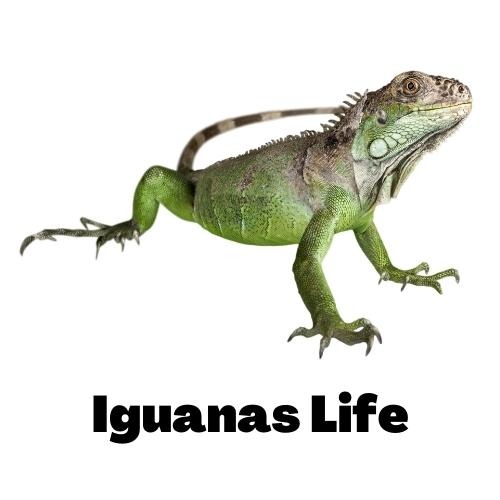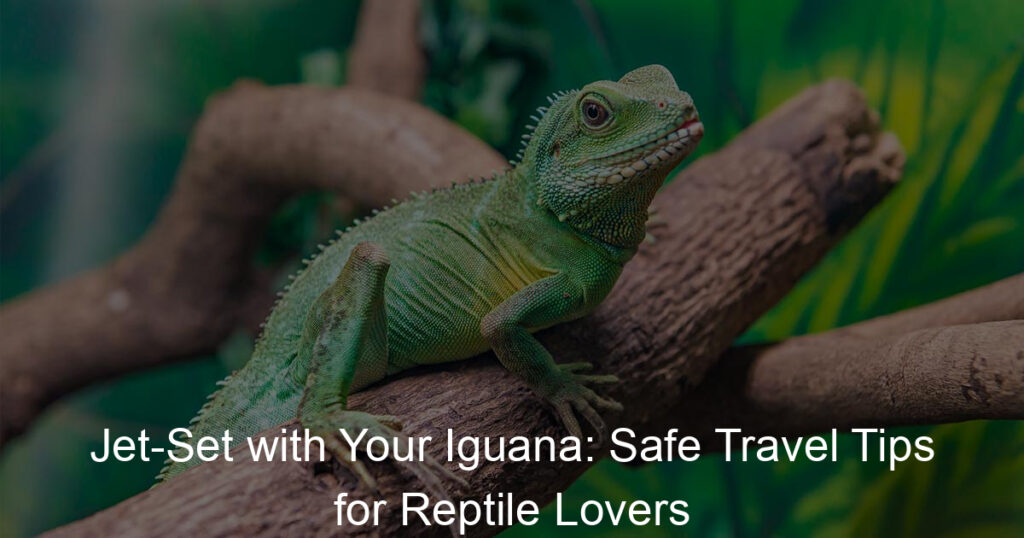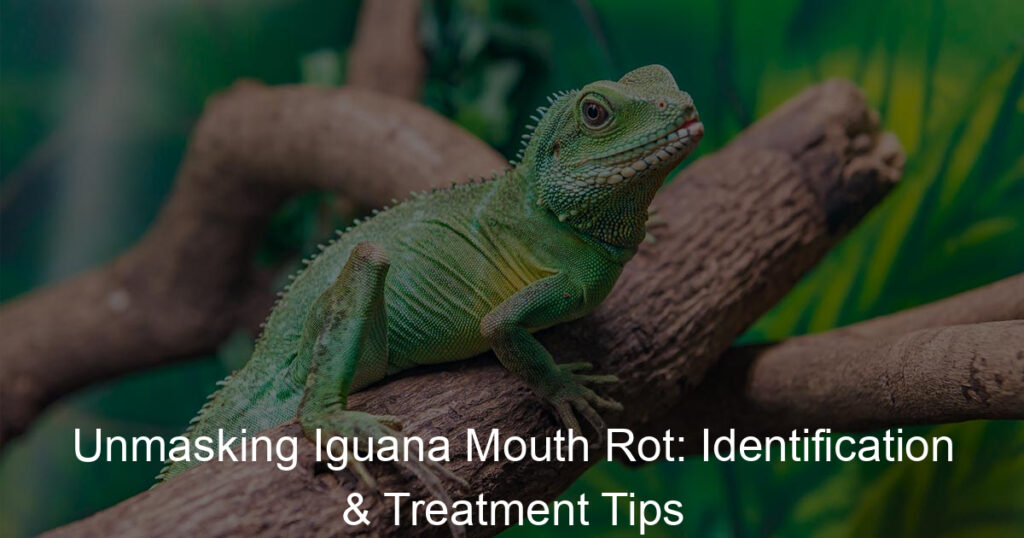Introduction to Iguana Care for Beginners
Welcome to our comprehensive guide on iguana care for beginners. If you’re considering bringing an iguana into your home, it’s essential to understand the commitment involved and the basics of iguana care. This guide will provide you with the necessary knowledge to make an informed decision and ensure your potential pet’s health and happiness.
- Understanding the commitment of iguana ownership
- Quick overview of basic iguana care
Firstly, owning an iguana is a long-term commitment. Iguanas can live for up to 20 years in captivity, so you must be prepared for the responsibility that comes with caring for a pet for this length of time. They require a significant amount of care, including a specialized diet, a large and well-maintained habitat, and regular health check-ups. Iguanas also need daily interaction and handling to stay socialized and happy. Therefore, owning an iguana is not a decision to be taken lightly.
Basic iguana care involves providing a suitable environment, a balanced diet, and proper healthcare. Iguanas require a large enclosure with plenty of space to climb and bask. They are herbivores and need a diet rich in leafy greens, fruits, and vegetables. Regular vet check-ups are essential to monitor their health and catch any potential issues early. Additionally, iguanas need mental stimulation, which can be provided through toys, interaction, and a varied environment.
As we delve deeper into this guide, we will explore these topics in more detail, providing you with a comprehensive understanding of iguana care. Whether you’re a first-time owner or considering adding an iguana to your family, this guide will equip you with the knowledge you need to provide the best care possible for your new pet.
First-Time Iguana Owners: What to Expect
Stepping into the world of iguana ownership can be an exciting adventure. However, it’s important to know what to expect. Let’s explore the lifespan and growth of an iguana, as well as their common behaviors and traits.
- The Lifespan and Growth of an Iguana
- Common Behaviors and Traits
Iguanas are known for their long lifespan and significant growth. With proper care, a healthy iguana can live up to 20 years in captivity. They grow rapidly in the first year, reaching about half their adult size. By the time they are fully grown, they can reach lengths of 6 feet from nose to tail tip. It’s important to remember that iguanas require a lot of space due to their size.
Iguanas are unique creatures with distinct behaviors and traits. They are diurnal, meaning they are active during the day and sleep at night. Iguanas are also known for their love of climbing, so providing them with a vertical space in their habitat is essential.
When it comes to their temperament, iguanas can be quite territorial and may show signs of aggression if they feel threatened. However, with regular handling and socialization, they can become more comfortable and even affectionate with their owners.
It’s also worth noting that iguanas are herbivores. They thrive on a diet of fresh vegetables, fruits, and leafy greens. Feeding them a balanced diet is crucial for their health and longevity.
In conclusion, owning an iguana is a long-term commitment that requires understanding and catering to their specific needs. With proper care, you can enjoy the companionship of your iguana for many years to come.
Simplified Iguana Care: Housing
When it comes to caring for your iguana, one of the most important aspects to consider is housing. Providing your iguana with a suitable living environment is crucial for its health and happiness. Let’s explore how to choose the right enclosure for your iguana.
Choosing the Right Enclosure
Choosing the right enclosure for your iguana is not as simple as picking out a cage. There are several factors to consider, including the size of the enclosure and the type of enclosure that will best suit your iguana’s needs.
- Size requirements:
- Types of enclosures:
Iguanas are large reptiles that need plenty of space to move around. A small enclosure can lead to stress and health problems. As a rule of thumb, the enclosure should be at least twice as long as your iguana, and as high as the iguana is long. For a young iguana, a 20-gallon tank may suffice, but an adult iguana will need an enclosure that is at least 6 feet long, 6 feet high, and 3 feet wide.
There are several types of enclosures suitable for iguanas. Glass aquariums are a popular choice because they are easy to clean and provide a good view of your pet. However, they can be heavy and difficult to move. Wooden enclosures, on the other hand, are lighter and easier to move, but they can be more difficult to clean. Screen or mesh enclosures are another option. They provide good ventilation, which is important for iguanas, but they may not hold heat as well as other types of enclosures.
In conclusion, the right enclosure for your iguana will depend on its size and your personal preferences. Remember, the most important thing is that your iguana has enough space to move around and that the enclosure is easy for you to clean and maintain.
Setting Up the Enclosure
Once you’ve chosen the right enclosure for your iguana, the next step is to set it up properly. This involves controlling the temperature and humidity, setting up the right lighting, and choosing the appropriate substrate. Let’s delve into these aspects one by one.
- Temperature and Humidity Control
- Lighting Requirements
- Choosing the Right Substrate
Iguanas are tropical creatures and they thrive in a warm and humid environment. The ideal temperature for your iguana’s enclosure should be between 85-95 degrees Fahrenheit during the day and 75-85 degrees at night. Humidity levels should be kept at around 70%. You can control these aspects using a thermostat and a hygrometer.
Lighting is crucial for iguanas as they need UVB light to produce Vitamin D and absorb calcium. Without proper lighting, your iguana can suffer from metabolic bone disease. Therefore, it’s essential to provide 10-12 hours of UVB light every day. You can achieve this by using a special reptile UVB bulb.
The substrate is the material you place at the bottom of the enclosure. It’s important to choose a substrate that is safe and comfortable for your iguana. Newspaper, butcher paper, or reptile carpet are good choices. Avoid using substrates like sand or bark as they can cause impaction if ingested.
In conclusion, setting up the enclosure correctly is a vital part of iguana care. By providing the right temperature, humidity, lighting, and substrate, you can create a comfortable and healthy environment for your iguana.
Beginner’s Guide to Iguana Diet
Feeding your iguana the right diet is crucial to its health and well-being. This guide will help you understand the basics of iguana nutrition.
Understanding Iguana Nutrition
Iguanas are herbivores, meaning they eat plants. But not all plants provide the same nutrients. Thus, it’s essential to provide a varied diet to ensure your iguana gets all the nutrients it needs.
- The Importance of a Varied Diet
- Key Nutrients and Their Sources
Just like humans, iguanas need a variety of nutrients to stay healthy. Feeding your iguana the same food every day can lead to nutritional deficiencies. A varied diet also helps keep your iguana interested in its food. Imagine eating the same meal every day – you’d get bored, right? The same goes for your iguana.
There are several key nutrients that your iguana needs:
| Nutrient | Source |
|---|---|
| Calcium | Dark leafy greens like kale and spinach |
| Vitamin D | Exposure to sunlight or a special UVB light |
| Protein | Vegetables like peas and beans |
Remember, variety is key. Try to include a mix of different food sources in your iguana’s diet to ensure it gets a balanced intake of nutrients.
Feeding Schedule and Portions
Feeding your iguana correctly is crucial to its health and well-being. Let’s look at how often you should feed your iguana and how much to serve at each meal.
- How often to feed your iguana
- How much to feed at each meal
Young iguanas require daily feeding, while adult iguanas can be fed every other day. This schedule helps mimic their natural feeding habits in the wild. It’s important to feed your iguana at the same time each day to establish a routine.
The amount of food your iguana needs depends on its size and age. A young iguana might eat a cup of food per day, while an adult iguana could eat up to three cups. Remember, the majority of their diet should be fresh vegetables and fruits.
| Age | Feeding Frequency | Portion Size |
|---|---|---|
| Young Iguana | Daily | 1 Cup |
| Adult Iguana | Every Other Day | Up to 3 Cups |
Remember, every iguana is unique and may have different dietary needs. Always observe your iguana’s eating habits and adjust the feeding schedule and portions as necessary. Consult with a vet if you have any concerns about your iguana’s diet.
Iguana Care Tips: Health and Wellness
Keeping your iguana healthy and well is a crucial part of pet ownership. In this section, we will discuss common health issues that iguanas may face, how to recognize signs of illness, and when to seek veterinary care.
Common Health Issues
Iguanas, like other pets, can suffer from various health issues. Some of the most common include metabolic bone disease, respiratory infections, and parasites. It’s important to be aware of these potential problems so you can spot any signs of illness early on.
- Recognizing signs of illness: Iguanas may not show obvious signs of illness until they are quite sick. However, there are some signs you can look out for. These include changes in eating or drinking habits, lethargy, difficulty moving, and changes in the color or consistency of their feces. If your iguana shows any of these signs, it’s important to seek veterinary care as soon as possible.
- When to seek veterinary care: If your iguana shows any signs of illness, it’s important to seek veterinary care immediately. Even if the signs are subtle, it’s better to be safe than sorry. Remember, iguanas can’t tell us when they’re feeling unwell, so it’s up to us to keep a close eye on their health and wellbeing.
In conclusion, keeping your iguana healthy involves being aware of common health issues, recognizing signs of illness, and knowing when to seek veterinary care. By staying informed and vigilant, you can ensure your iguana lives a long, happy, and healthy life.
Regular Health Checks
Just like us humans, iguanas also need regular health checks to ensure they are in the best of health. These checks help us spot any potential health issues early, making it easier to treat and manage them. Let’s delve into what you should look for during a health check and how often you should perform these checks.
- What to look for during a health check
- How often to perform health checks
When performing a health check on your iguana, there are several things you should pay attention to. Start by observing your iguana’s behavior. Are they active and alert? Or do they seem lethargic and uninterested in their surroundings? Next, check their skin. Healthy iguanas have smooth, bright, and clean skin. If you notice any discoloration, bumps, or cuts, it could indicate a health problem. Also, look at their eyes, nose, and mouth. These should be clear and free of any discharge. Lastly, take note of their eating and bathroom habits. Any changes in these could be a sign of illness.
As a responsible iguana owner, you should perform a basic health check on your pet every week. This involves observing their behavior and physical appearance, as mentioned above. However, it’s also important to take your iguana to a vet for a professional health check at least once a year. The vet will conduct a more thorough examination and may also perform certain tests to ensure your iguana is in good health.
In conclusion, regular health checks are a crucial part of iguana care. They help ensure your pet stays healthy and happy. Remember, early detection of health issues can make a big difference in your iguana’s wellbeing. So, make sure you perform these checks regularly and consult a vet if you notice anything unusual.
Quick Guide to Iguana Handling and Socialization
Handling and socializing your iguana correctly is crucial for their overall health and happiness. This guide will provide you with the necessary information to ensure you’re doing it right.
- Proper handling techniques
- Always approach your iguana slowly and calmly. Fast movements can scare them.
- Never grab an iguana by the tail. It can cause them stress and they might even drop their tail as a defense mechanism.
- Instead, gently scoop them up from underneath, supporting their entire body.
- Hold your iguana close to your body to make them feel secure.
- Tips for socializing your iguana
- Start socializing your iguana at a young age. Young iguanas are more adaptable to new experiences.
- Spend time with your iguana every day. This helps them get used to your presence and voice.
- Introduce new people slowly. Too many new faces at once can be overwhelming.
- Use treats to reward your iguana for positive interactions. This can help them associate socializing with positive experiences.
Handling an iguana requires care and patience. Here are some tips:
Socializing your iguana can help them become more comfortable around people. Here are some tips:
In conclusion, handling and socializing your iguana properly can significantly improve their quality of life. Remember to be patient and consistent, and your iguana will soon feel comfortable and secure in your care.
Conclusion: Embracing Iguana Ownership
As we conclude, let’s take a moment to reflect on the journey we’ve taken together. We’ve explored the fascinating world of iguanas and learned how to provide them with the best possible care. Now, it’s time to embrace the rewarding experience of iguana ownership.
- Recap of iguana care essentials
- Encouragement for first-time iguana owners
Throughout this guide, we’ve covered the basics of iguana care. We’ve learned that iguanas need a spacious and well-ventilated habitat, a balanced diet rich in leafy greens, and regular check-ups to ensure their health and wellness. We’ve also discovered the importance of proper handling and socialization to build trust with our scaly friends.
If you’re a first-time iguana owner, you might feel a bit overwhelmed. But remember, every expert was once a beginner. With patience, dedication, and the knowledge you’ve gained from this guide, you’re well-equipped to provide a loving home for your iguana. Embrace the journey and enjoy the unique companionship an iguana can offer.
As the famous herpetologist, Karl P. Schmidt once said, “Reptiles are a study in living art, and iguanas are no exception.” So, here’s to you, the budding iguana enthusiast, ready to embark on this exciting adventure. Embrace the world of iguana ownership with confidence and joy.













